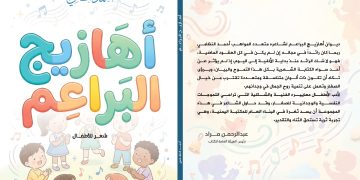Nature: The Eternal Muse and Moral Compass of Humanity
Written by SHAHID ABBAS, translated into Arabic by Poet and Translator Lebanese-Brazilian TAGHRID BOU MERHI
Nature is the mother of all beauty and the eternal home of unending wonders. Without it, all artistic expressions appear barren, stripped of their soul and ornamentation. It is an irreplaceable blessing—an exquisite gift from the Almighty—that nourishes both the body and the spirit. Present across literary traditions and cultural expressions worldwide, nature has served as the backbone of countless narratives, enriching human imagination and offering a mirror to the soul.
The Earth’s natural beauty—its mountains, oceans, skies, and forests—has inspired poetry, prose, music, and art for centuries. As John Keats profoundly wrote, “The poetry of the earth is never dead.” And William Shakespeare observed, “One touch of nature makes the whole world kin.” These immortal lines affirm nature’s timeless ability to connect, uplift, and transform.
Yet, in today’s age, with escalating threats like climate change and global warming, our responsibility to protect and preserve nature has become more urgent than ever. Nature is not just our environment—it is the soul of the world’s body, a living, breathing entity that sustains life and symbolizes peace, resilience, and strength.
Throughout history, nature has been interpreted through various philosophical and cultural lenses. For example, ancient civilizations revered the Earth as a maternal figure—powerful and nurturing, yet capable of fury through natural disasters. Romantic poets saw nature as a spiritual guide and a source of divine truth. William Wordsworth famously wrote:
“Come forth into the light of things, let Nature be your teacher.”
In his poem Tintern Abbey, he also affirms:
“Nature never did betray the heart that loved her.”
S.T. Coleridge added a mystical dimension to nature, describing it with supernatural awe. John Keats, who considered nature a lifelong companion, claimed that no bird could flutter by without leaving an imprint on his soul. To him, nature was not merely an inspiration—it was a confidante, a silent friend.
Artists and writers often use elements of nature as symbols:
The sky represents peace, divinity, and endless possibility.
Rainbows symbolize hope and renewal—a divine promise after turmoil.
The sun stands for life, power, and divine energy, where sunrise brings hope and sunset signifies closure or mortality.
Water reflects both creation and destruction—life, rebirth, and purification, as seen in literature from Crime and Punishment to modern novels like Klara and the Sun.
Woods and forests have long symbolized mystery, fear, and the unknown. Henry David Thoreau famously said:
“I went to the woods because I wished to live deliberately… and not, when I came to die, discover that I had not lived.”
Nature is not just a passive backdrop; it is an active character in literature and life. It comforts, it warns, it teaches, and it empowers. In Romantic literature, nature was often revered as a path to independence and self-realization—a sacred text that revealed truths beyond human understanding.
But today, the natural world—our only home—is under siege. In our pursuit of progress and profit, we are destroying the very foundation of our survival. We are polluting the skies, depleting forests, contaminating water, and ignoring the cries of animals and ecosystems that once flourished.
It is time we recognize that to nurture nature is to nurture ourselves. This planet is not just a resource—it is our shared heritage and responsibility. As the custodians of Earth, we must awaken to this truth before it is too late. Ignoring nature’s warnings today will result in the collapse of tomorrow.
In conclusion, nature is a sacred gift—our provider, our protector, and our greatest muse. Let us honor her through awareness, respect, and action. If we fail to do so, we will not only betray our future generations—we will lose the essence of what it means to be human.
الطبيعة: الملهمة الأبدية والبوصلة الأخلاقية للإنسانية
بقلم الشاعر الباكستاني شاهد عباس
ترجمتها إلى العربية الشاعرة والمترجمة اللبنانية البرازيلية تغريد بو مرعي
الطبيعة هي أمّ الجمال كلّه، والوطن الأبدي للعجائب التي لا تنتهي. وبدونها، تبدو جميع التعبيرات الفنية عقيمة، منزوعة الروح والزينة. إنها نعمة لا يمكن استبدالها—هبة رائعة من الخالق—تغذّي الجسد والروح معاً. وقد كانت حاضرة في مختلف التقاليد الأدبية والتعبيرات الثقافية حول العالم، تشكّل العمود الفقري لعدد لا يُحصى من السرديات، وتُغني الخيال البشري وتقدّم مرآةً للروح.
إن جمال الأرض الطبيعي—جبالها، محيطاتها، سماواتها، وغاباتها—قد ألهم الشعر والنثر والموسيقى والفن لقرون عديدة. كما كتب جون كيتس بعمق: “شعر الأرض لا يموت أبداً.” وأشار ويليام شكسبير قائلاً: “لمسة واحدة من الطبيعة تجعل العالم بأسره أقرباء.” هذه العبارات الخالدة تؤكد قدرة الطبيعة الأبدية على الربط، والارتقاء، والتحول.
لكن في عصرنا الحالي، ومع تصاعد التهديدات مثل تغيّر المناخ والاحتباس الحراري، أصبحت مسؤوليتنا في حماية الطبيعة والحفاظ عليها أكثر إلحاحاً من أي وقت مضى. فليست الطبيعة مجرّد بيئة تحيط بنا، بل هي روح جسد العالم، كيان حي يتنفّس، يحفظ الحياة، ويجسّد السلام والمرونة والقوة.
على مرّ التاريخ، تم تفسير الطبيعة من خلال عدسات فلسفية وثقافية متنوّعة. فقد قدّست الحضارات القديمة الأرض كشخصية أمومية—قوية وحنونة، وقادرة في الوقت ذاته على الغضب من خلال الكوارث الطبيعية. ورأى الشعراء الرومانسيون في الطبيعة مرشداً روحياً ومصدراً للحقيقة الإلهية. وقد كتب ويليام ووردزوورث قائلاً:
“اخرج إلى ضوء الأشياء، ودع الطبيعة تكون معلمك.”
وفي قصيدته دير تنترن، أكد أيضاً:
“الطبيعة لم تخن أبداً قلباً أحبّها.”
أما كوليردج فقد أضفى على الطبيعة بعداً غامضاً، واصفاً إياها بهالة من الرهبة الخارقة. بينما اعتبرها جون كيتس رفيقة درب أبدية، مدّعياً أنه لا يمكن لطائر أن يمرّ بالقرب منه دون أن يترك أثراً في روحه. بالنسبة إليه، لم تكن الطبيعة مصدر إلهام فحسب، بل كانت صديقة صامتة، ورفيقة في التأمل.
غالباً ما يستخدم الفنانون والكتّاب عناصر الطبيعة كرموز:
السماء: ترمز إلى السلام، والقداسة، والاحتمالات اللامتناهية.
قوس القزح: رمز للأمل والتجدد—وعد إلهي بعد الاضطراب.
الشمس: تمثل الحياة، والطاقة، والقوة الإلهية؛ حيث يرمز الشروق إلى الأمل، والغروب إلى الختام أو الموت.
الماء: يعكس الخلق والدمار معاً—الحياة، والبعث، والتطهير، كما في الأدب من الجريمة والعقاب إلى روايات حديثة مثل كلارا والشمس.
الغابات: طالما مثّلت الغموض، والخوف، والمجهول. وكما قال هنري ديفيد ثورو:
“ذهبت إلى الغابة لأعيش عن قصد… وألا أكتشف حين أموت أنني لم أعش.”
الطبيعة ليست مجرد خلفية صامتة؛ إنها شخصية فاعلة في الأدب والحياة. تُواسي، تُحذر، تُعلّم، وتُقوّي. ففي الأدب الرومانسي، غالباً ما كانت الطبيعة تُقدّس كطريق إلى الاستقلال وتحقيق الذات—نصّ مقدّس يكشف حقائق تتجاوز الفهم البشري.
لكن اليوم، يتعرّض عالمنا الطبيعي—موطننا الوحيد—لهجوم شرس. ففي سعي الإنسان نحو التقدّم والربح، نقوم بتدمير أساس بقائنا نفسه. نلوّث السماء، ونستنزف الغابات، ونلوّث المياه، ونتجاهل صرخات الحيوانات والأنظمة البيئية التي كانت مزدهرة ذات يوم.
لقد حان الوقت لندرك أن رعاية الطبيعة هي رعاية لأنفسنا. هذا الكوكب ليس مجرد مورد، بل هو إرثنا المشترك ومسؤوليتنا الجماعية. وبصفتنا أوصياء على الأرض، يجب أن نستفيق لهذه الحقيقة قبل فوات الأوان. تجاهل تحذيرات الطبيعة اليوم سيؤدي إلى انهيار حتمي في الغد.
في الختام، إن الطبيعة هبة مقدسة—هي معطيتنا، حاميتنا، وأعظم ملهم لنا. فلنكرّمها بالوعي والاحترام والعمل. فإذا فشلنا في ذلك، فلن نخون الأجيال القادمة فحسب، بل سنفقد جوهر إنسانيتنا.





















